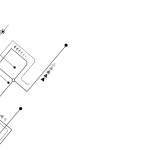How to Choose Between a Data Warehouse, Data Lake, or Data Platform for Your Nonprofit
Managing data effectively can seem daunting, especially for nonprofits, foundations or associations that capture significant amounts of information. From donor data, marketing data, financial monitoring, to evaluation metrics, choosing the right data infrastructure is critical for decision-making, reporting, and growing a nonprofit, foundation, or association.
Increasingly, our clients are asking important questions about where data “lives.” After experiences trying to get “all” the data into systems like CRM, (Salesforce, Dynamics, etc.) and the complexities associated with that, people are wondering if there are better ways.
As Build thinks about complex selections that manage significant data, be it transactional data or data captured across multiple systems, we’re helping clients navigate questions related to data warehouses, data lakes, and data platforms.
Data plays a crucial role in empowering nonprofits to plan strategically and measure ROI. Data structure and business needs for data increasingly impact technology selections. Selecting the right approach—whether it’s a data warehouse, data lake, or data platform—requires distinct approaches. Each option offers its own set of features, benefits, and tradeoffs, and what you choose impacts not only your nonprofit’s operations and outcomes but the ongoing costs of ownership and the complexity of managing the solution.
This post will break down the key differences between these three types of data solutions, what factors nonprofits, foundations, and associations should consider, and how to identify the one that best aligns with your organization’s goals.
Understanding the Basics
Before deciding, it’s helpful to understand these three types of data solutions and how they function.
What is a Data Platform?
A data platform is an all-in-one solution designed to handle various data-related tasks such as storage, processing, integration, and analytics. Think of it as a comprehensive ecosystem for managing data. Popular examples include Snowflake and Google BigQuery. In some ways, any centralized data storage solution like SharePoint can be considered a data platform if it’s connected to reporting tools like Power BI or Tableau.
What is a Data Lake?
A data lake is a large repository that stores raw, unprocessed data in its native format, from spreadsheets to multimedia files. It’s particularly useful if your organization deals with diverse or unstructured data. Tools like Amazon S3 or Microsoft Azure Data Lake Storage are popular examples.
Key Features of a Data Lake:
- Stores raw data of all types without predefined structure. You’re capturing data today without having to determine how it connects to other data.
- Ideal for handling large volumes of unstructured or semi-structured data including documents
- Compatible with advanced analytics and machine learning workloads
What is a Data Warehouse?
A data warehouse manages and stores highly structured data, such as transactional data, optimized for querying and reporting. It’s designed primarily for operational reporting and business intelligence. Examples include Amazon Redshift and Microsoft Synapse Analytics.
Key Features of a Data Warehouse:
- Improved data quality and consistency through processes for cleaning and transforming data
- Suitable for high-speed analytics and reporting like a fundraising campaign performance
- May be ideal for organizations that rely on extensive trend analysis based on well-defined data.
Key Considerations for Nonprofits, Foundations, and Associations
Choosing between a data platform, data lake, or a data warehouse requires carefully evaluating your organization’s unique needs and, equally important, the capacity for the ongoing care and feeding of what you select.
1. Data Volume and Variety
Start by assessing the amount and variety of data your nonprofit handles. The scale of investment in a data solution should match the requirements and scale of your organization.
2. Data Accessibility and Usability
Your selected solution should allow easy access for a diverse audience ranging from leadership to data analysts to department heads.
3. Cost and Budget Constraints
Budget plays a significant role in decision-making for nonprofit organizations. Beyond the tool itself, how will your organization support the ongoing costs related to staffing, storage, and training to get the most from an investment?
4. Scalability and Future Growth
As a generalization, data lakes and data platforms are scalable for future growth, while data warehouses may require additional, ongoing, investment.
Making the Decision
When selecting the best data solution for your nonprofit, consider these steps:
- Ensure that your organization has a data strategy that provides the foundational context for informing a decision.
- Assess your data needs, both current and future, and make sure they are grounded in the realities of today and the broader organizational strategy.
- Compare data solutions based on their ability to meet your volume, variety, usability, staffing, and budget requirements.
- Identify team expertise and whether additional training or external support will be needed.
- For a seamless transition, follow best practices for change management such as conducting small data pilots, establishing clear data governance protocols, and providing training for team members.
Selecting the Right Data Solution
Make sure, when selecting a data solution, that the analysis is requirements-based – not based on what a single team believes to be the correct choice. Nonprofits, associations, and foundations often hear a term like data warehouse and then jump to “We need a data warehouse” without fully understanding the pros and cons of each approach.
Choosing the right data warehouse, data lake, or data platform can transform your nonprofit’s ability to make data-driven decisions and maximize impact. You don’t have to navigate this alone—consult experts and empower your team to adopt the best solution for your needs.


